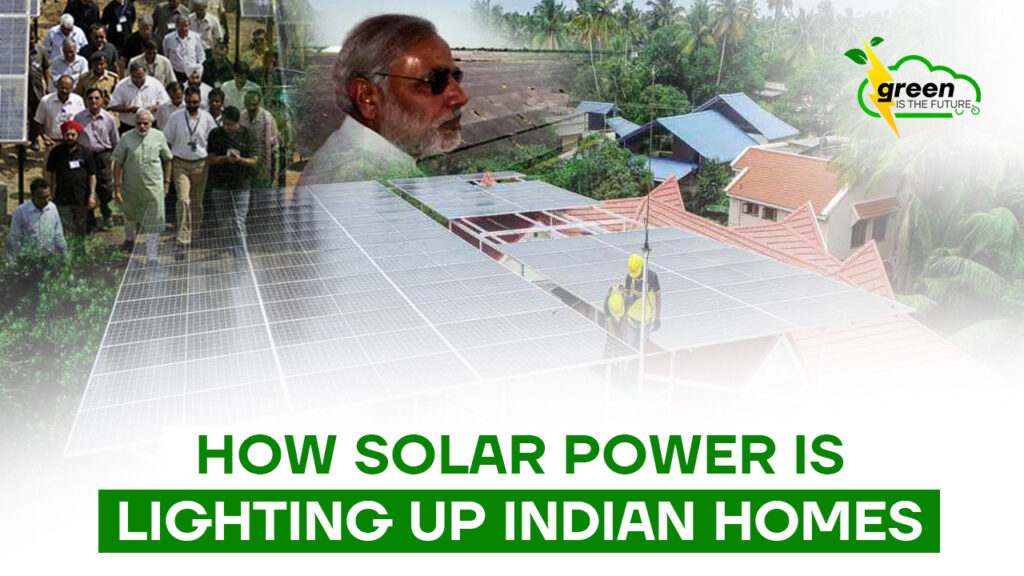India’s solar home experience has been one of progress from the periphery of rural electrification to the mainstream household energy source for millions of families. The history of that experience is one of ongoing policy initiatives, evolving technology, and growing consumer demand.
Early Days: Lighting Up Remote Homes
Before the 2000s, solar power in India was largely a rural phenomenon. Small photovoltaic (PV) systems and solar lanterns were deployed in remote villages, primarily as a means to tackle the absence of grid electricity. The applications were basic, lighting, small fans, and phone charging, used mostly in off-grid regions. High costs, lack of awareness, and limited policy support kept solar adoption negligible in urban settings.
Policy Push in the 2000s: Setting the Foundation
The early 2000s laid the groundwork for more structured adoption. A pivotal moment came in 2010 with the launch of the Jawaharlal Nehru National Solar Mission (JNNSM). This national policy aimed to promote solar power across sectors, including residential rooftops. Gujarat took the lead among states, offering subsidies under the leadership of then-Chief Minister Narendra Modi. Despite this, by 2009, India’s total solar capacity was only 15 MW, with residential usage barely registering.

2010s: Rooftop Solar Finds a Footing
The 2010s saw increased traction as solar panel prices declined globally. Government subsidies and net metering policies made rooftop systems more attractive. By 2014, India’s grid-connected solar capacity reached 2.2 GW. Urban and semi-urban households began to embrace rooftop solar. However, progress was slower than expected. By 2019, while the total solar capacity rose to 28.4 GW, rooftop solar only reached 5.84 GW, far below the 40 GW target.
Cost was a major barrier. A basic home solar system cost around $200, and loans were limited. Low-income families, in particular, found it difficult to participate, highlighting the need for more inclusive financing models.
2020s: Acceleration Under PM Surya Ghar
The 2020s marked a turning point. On February 15, 2024, the government launched the PM Surya Ghar: Muft Bijli Yojana, with a ₹75,021 crore outlay. The scheme aims to solarize 10 million homes, offering subsidies ranging from ₹30,000 to ₹78,000 based on system size. Loans with 7% interest rates have made solar systems financially accessible.
By April 2025, more than 95 lakh households had registered, and over 800,000 homes were already solarized—surpassing the total rooftop installations from the entire previous decade. In the first half of 2024 alone, India added 1.1 GW of rooftop solar, a 26% increase over 2023.
India’s total solar capacity now stands at 81 GW, ranking it 4th globally, according to the latest official data.
Drivers of Residential Solar Growth
Several factors have contributed to the rising adoption of solar power in Indian homes:
- Government Incentives: Central and state subsidies, along with net metering policies, have improved economic feasibility.
- Technological Advancements: Cost-effective panels, smart inverters, and battery storage have increased efficiency.
- Urbanization and Awareness: Urban dwellers are turning to solar amidst rising electricity bills and power instability.
- Energy Security: Solar aligns with India’s renewable goals, including a 500 GW target by 2030.
Persistent Challenges
Despite progress, key challenges remain:
- Equity and Financing Gaps: High upfront costs and income-linked loan requirements exclude many low-income families. Loans above ₹2 lakh require proof of annual income above ₹3 lakh.
- Policy and Implementation Gaps: Slow approvals, net metering delays, and lukewarm support from some DISCOMs (Distribution Companies) hinder faster rollout.
- Environmental Impact: The growing volume of used solar panels raises concerns over e-waste, with India yet to establish a robust recycling infrastructure.
Current Status and Rooftop Potential
A 2023 Council on Energy, Environment and Water (CEEW) report estimated India’s residential rooftop potential at 637 GW, with rural areas contributing 363 GW and urban areas 274 GW. The National Institute of Solar Energy (NISE) has pegged India’s overall solar potential at 748 GW, assuming 3% of wasteland use.
Gujarat leads in household willingness to install rooftop solar, with a 13% intent rate compared to the national average of 5%. The PM Surya Ghar scheme has received over 13 lakh applications, indicating growing public interest.
Future Outlook: Toward Energy Democracy
India’s rooftop solar sector is now in an accelerating phase. Analysts project that solar and wind will meet two-thirds of India’s energy demand growth by 2032. To ensure inclusivity, there is a growing focus on community solar models, lower-risk loans, and aggregated rooftop leasing.
Schemes like the Production Linked Incentive (PLI) are also reducing dependence on imports. India’s solar cell imports from China dropped from 90% in FY24 to 56% in FY25, strengthening domestic manufacturing.
Comparative Analysis
To illustrate the evolution, consider the following table comparing key milestones:
| Period | Key Developments | Installed Capacity (GW) | Residential Focus |
|---|---|---|---|
| Pre-2000s | Off-grid systems, rural focus | Negligible | Basic lighting, small appliances |
| 2000s (Pre-2010) | JNNSM launch, Gujarat subsidies | 0.015 (2009) | Early rooftop initiatives |
| 2010s | Subsidies, net metering, cost reduction | 28.4 (2019) | Urban and semi-urban growth |
| 2020s (2024-2025) | PM Surya Ghar, record installations, PLI scheme | 81 (2024) | Mass adoption, 95+ lakh registrations |
This table highlights the rapid acceleration in the 2020s, driven by policy and market dynamics.
Conclusion
The evolution of solar power in Indian residential homes has been a story of resilience, innovation, and policy leadership. From lighting up rural homes to powering urban households, solar energy is becoming central to India’s clean energy narrative. The journey ahead depends on how India bridges equity gaps, addresses environmental concerns, and sustains the momentum created by flagship schemes like PM Surya Ghar.
Read Also: Andhra Pradesh Set to Host India’s Largest Renewable Energy Park in Anantapur

